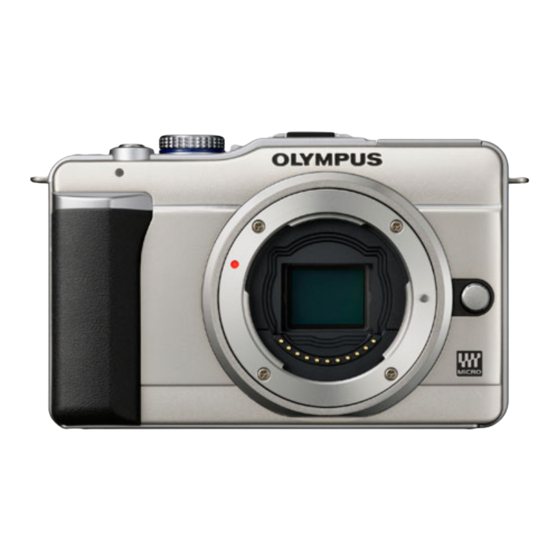Olympus E-PL1 Manuale d'uso - Pagina 4
Sfoglia online o scarica il pdf Manuale d'uso per Camera Accessories Olympus E-PL1. Olympus E-PL1 9. Camera underwater housing
Anche per Olympus E-PL1: Specifiche tecniche (5 pagine)

The O-ring seal is the main barrier between the water outside and the air space within
the camera. It is an effective barrier only if the seal is properly maintained. The O-ring
seal should be inspected before every dive. The following information is provided for
guidance in using and maintaining the O-ring seal.
4.2 Maintaining the O-ring Seal
If the main body to lid O-rings are not installed, install the O-rings before diving. Their care and
maintenance are critical to the watertight integrity of the housing. If the O-rings are contaminated,
or not already installed; inspect, grease and install the O-rings according to the following
guidelines.
4.3 Inspection, cleaning and re-instillation of the O-rings
Tools
A soft cotton bud or sponge applicator - make sure these are free of all contamination such as
loose fibers, and the tube of silicone grease supplied with the housing. Note other types of silicone
grease specifically for use with underwater camera equipment can usually also be used. It is
advised to carry out the following procedure on a firm clean level surface, e.g. at a table, to
prevent skidding especially when diving from a boat.
When to maintain the O-ring seal
Remove the O-ring periodically for inspection. It is not necessary to remove, clean and re-install
the O-ring after every dive provided the O-rings are not become contaminated. As a rule of
thumbs set up the camera and housing before a day's diving. If the housing is required to be
opened between dives for changing memory card or re-charging batteries, make sure the outside
of the housing is thoroughly toweled dry before opening up. After removing the lid and servicing
the camera, replace the lid straight away, rather than leaving it lying around. Before replacing the
lid, check the o-rings and make sure that no contamination such as dust, hair, salt, sand etc. has
fallen onto the O-ring or O-ring recess, as a precaution we recommend to inspect the O-ring every
time the lid is opened and to carry out the maintenance only if necessary.
Procedure
l Place the lid on a firm non-slip level surface.
l The O-ring can be extracted using an O-ring extractor tool (make sure the tool has no sharp
edges). Alternatively use the flats of the thumbs to gently stretch the O-ring on two faces thus
making a small loop protruding a few mm. T he loop can then be grasped between finger and
thumb to pull the O-ring over the lip.
l Clean the O-ring recess (the square groove where the O-ring sits) with a cotton bud or sponge
4
